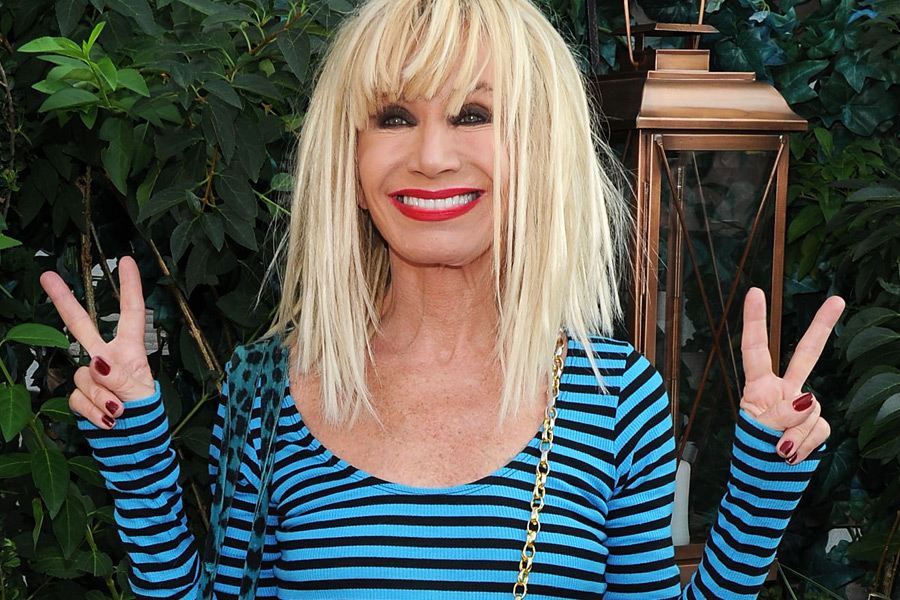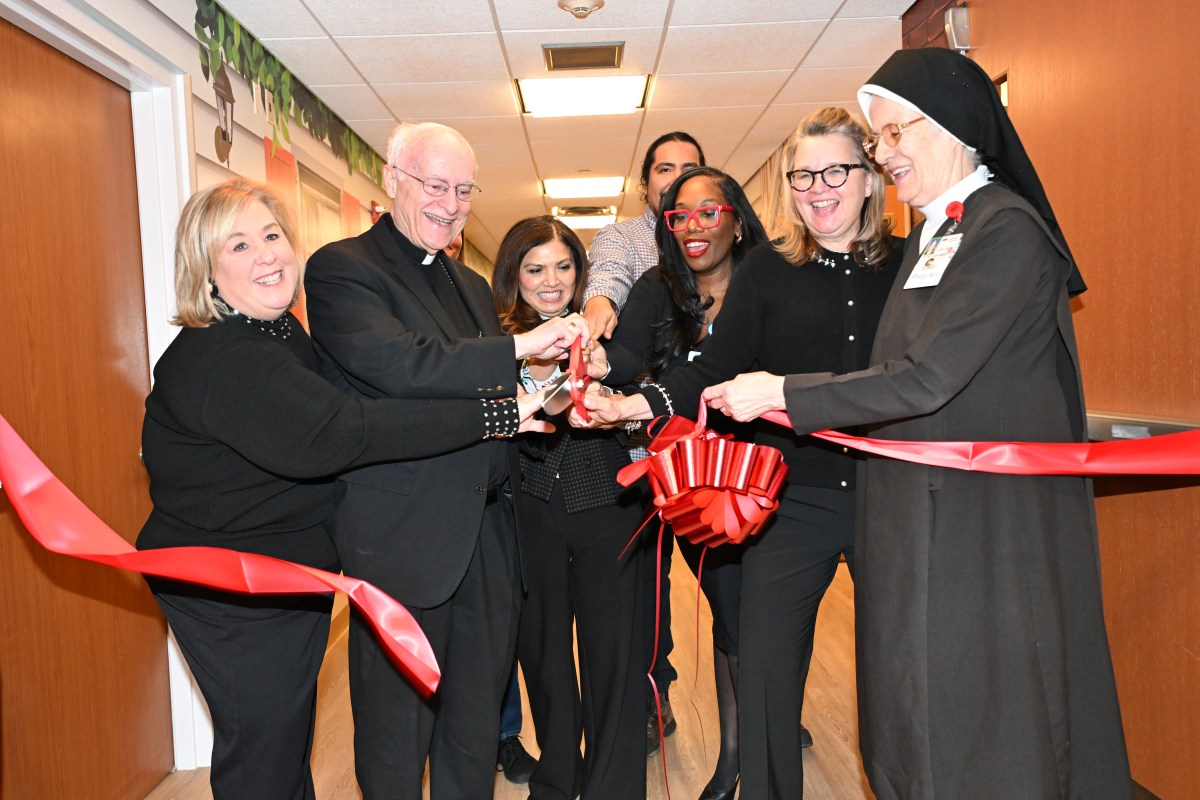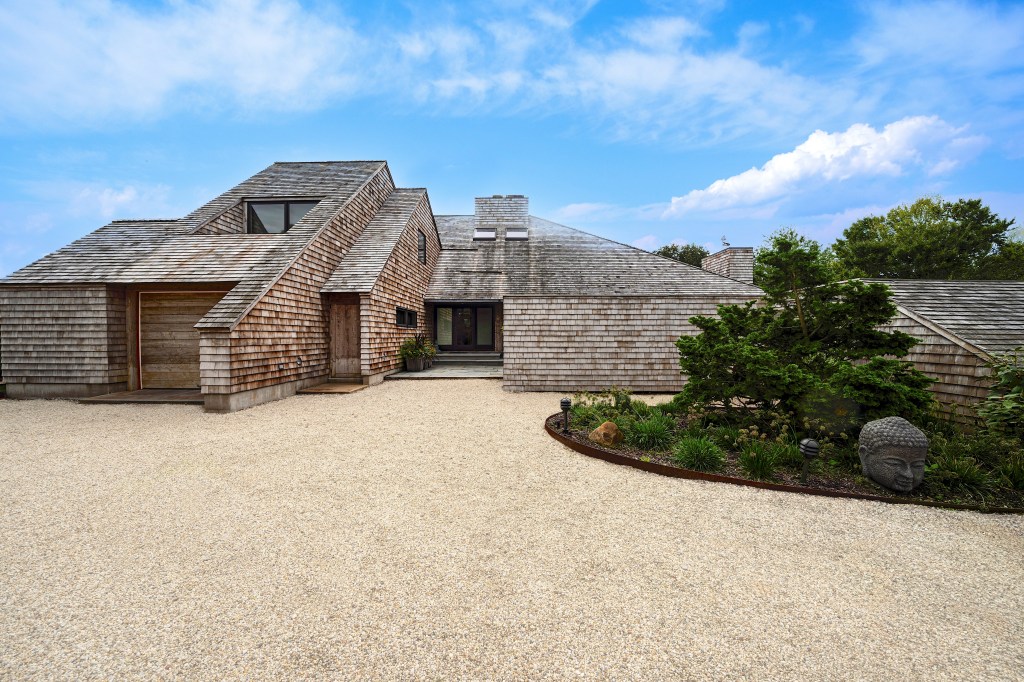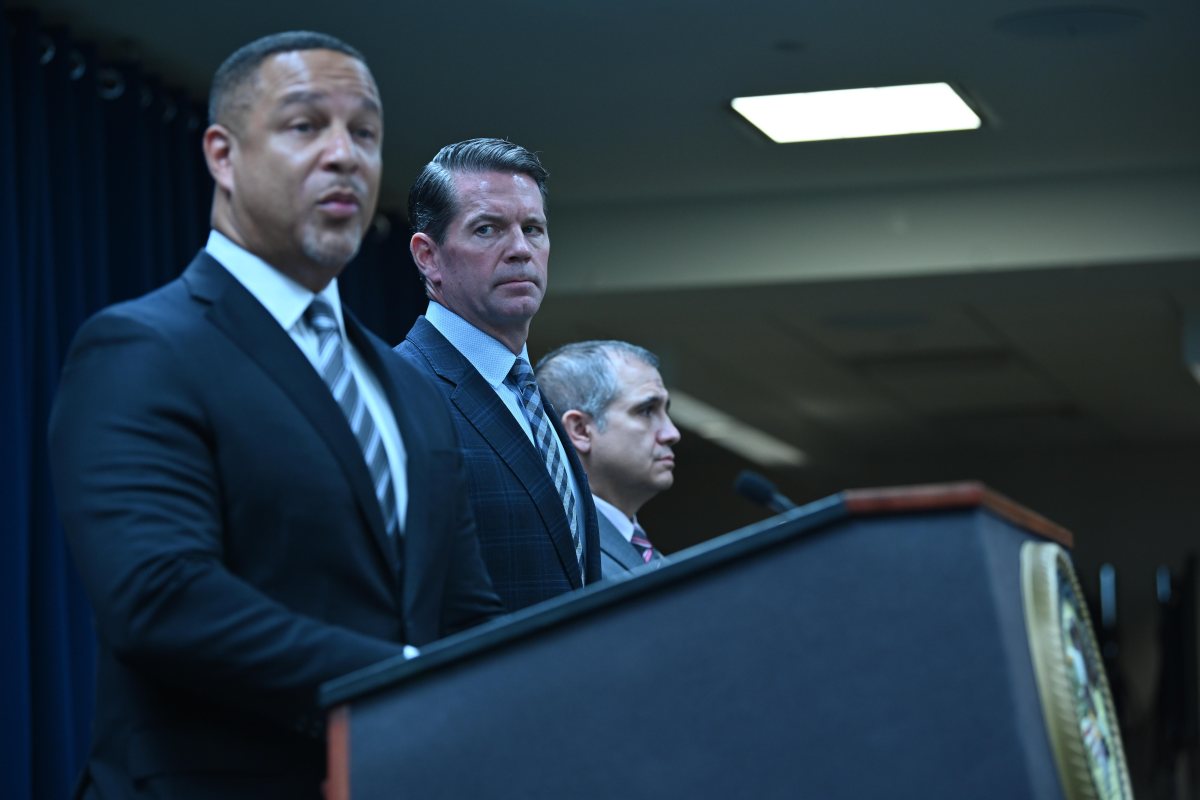Who's Here: Betsey Johnson, Designer

Everybody knows Betsey Johnson. She’s the famous clothes designer who has been plying her trade since the 1960s with colorful clothes and accessories for women that celebrate life and happiness. Her fashions today, all at affordable prices, are sold in stores around the world. She has a design studio on West 39th Street where she produces her collections. She has runway shows at Lincoln Center, an apartment in Manhattan and a house in East Hampton. She even has a fan club.
“Mostly today, it’s the fans who have been with me forever,” she told me. “But I also have a fan base among the young. Last year, I did a Betsey Johnson Vintage line for Urban Outfitters.”
Betsey Johnson first came out to the Hamptons in 1965 as part of the Andy Warhol crew. “Andy had this wonderful, gorgeous beachfront spread in Montauk. We were all the freaks coming out here. As for the rest of the Hamptons, it was funky farmers and the stuffy Old Guard and tourists. It’s so different now.”
Betsey first rented a place in Amagansett in 1991. Then, in 2000, she bought a home in East Hampton where she was soon joined by her daughter Lulu.
I am, however, on this day having coffee with Betsey in her Manhattan apartment, which is on the 10th floor of a building on Madison Avenue. It is mid-week. She has a beautiful view of Central Park from her terrace. She’s also in grandma heaven. Hard to believe she is a grandma. But also in the building in an apartment even larger than hers is her daughter LuLu and her two granddaughters, age 8 and 6.
Betsey is a beautiful blonde woman dressed exactly as you might imagine, in her own unique designs. Lots of little bows and things. She is filled with enthusiasm, a trait she had all her life. It is infectious and just being around her is exciting.
Betsey was born and raised in Weathersfield, Connecticut, which was a farm town back then. Her dad was a mechanical engineer who worked at a factory in Windsor, which was the next town over. The factory made pot-bellied stoves and castings for Colt and Winchester rifles.
Betsey went to Weathersfield grammar school and Terryville High School.
“I loved art. I had the best teacher, Henrietta Card. I also had a dancing teacher, Ann Pym, who had been a chorus girl and she dragged me to New York and I studied acrobatics, jazz, tap dancing, ballet, Hindu and Spanish dancing. I also went to Ted Shawn’s School of Dance at Jacob’s Pillow, the counterpart of Tanglewood.
“I was a lifeguard in the summer, an ice cream girl at Friendly’s, but I died for cheerleading. I was a cheerleader for nine years. I was the aerialist.”
Betsey, went to New York City at 16 to be a dancer, and passed an audition. “I loved the work,” she says. She bought sequins and costumes. She was also accepted by Pratt Institute and went there for a year, where she excelled at cheerleading, art and dance. She was also the president of her class.
But she didn’t like being in Brooklyn where Pratt was. It was dangerous on the streets and the kids all wore beepers for that reason, and she decided that if she was serious—and this is about cheerleading, not design—she should transfer to a big school.
“I checked out Boston University and finally settled on then went to Syracuse. I was there when Ernie Davis was the big running back on the football team. I tried out for cheerleader and missed in my freshman year, but then I was accepted as an acrobat. In my senior year, I was co-captain of the team and travelled with the football team to Notre Dame also to Miami and for a Bowl game in Los Angeles. I did really well in school.”
But, like a lot of people at the time, Betsey knew that the real excitement was in New York City and she thought, “I’ve got to go there. I mean the worst thing that could happen is if it doesn’t work out I will just leave.”
Scouring the want ads, she saw there were a great many jobs in the fashion industry available, also at some magazines.
“I knew fashion,” she said. “I could cut and sew. My mother, when I was growing up, sewed clothes for kids and I had made a lot of my own costumes for solos when I was dancing. I had been a Brownie, a Girl Scout, I had gotten every badge.”
In Betsey’s senior year at college, Mademoiselle magazine picked her as one of 20 girls around the country to become a guest editor for one edition of the publication. She was flown to New York, put up at the Barbazon, and worked as guest editor to the editor of the fabric department.
She spent three weeks in New York City and also as part of the program, one week in Europe. Betsey went to London, where she met Viva and Mary Quant. During the day she visited museums and galleries. Also Harrods. At nights she would go to the discos and SoHo, places with psychedelic lights and music, pink pillows and club rooms that were all mattresses and then crawl back to the Hilton.
At the end of the program, she continued as assistant editor to the fabric editor D.J. White, who as it happened, went off on maternity leave to have baby. They offered Betsey the job running the department for the next six months.
“The fabric department—they don’t even have a section for the fabric department in the magazine anymore—had incredible files. I was dazzled by all of the kinds of lamés and dayglo colors and Lurexes.”
In her $62-a month sixth story walkup under the Brooklyn Bridge, Betsey designed little miniskirts, leotard-like costumes and dancing school type t-shirts and she began selling them to friends on the side.
“I absolutely loved doing this,” she said, “but I thought, who’s going to know about it?”
At Mademoiselle, she was given a job doing illustrations. Her first illustrations were one page of heavy black line drawings of shoes. After that, they gave her three pages and then six pages.
“Then D.J. came back and I was transferred to a clerk-assistant job, a secretary in the art department. But I’m still selling my clothes. So I made up a catalogue and put it in the ladies room at the magazine.”
From that catalogue came her first big break. Mademoiselle featured one of her shirts, a t-shirt with ribbons and flowers in the “shop by mail” section.
“Suddenly the orders started coming in. I could do three a night, ten on a weekend. I needed to buy three yards of cotton crochet fabric. I was charging $10 and $20 for a shirt. I had to borrow money from my parents to finance it.”
Back at Mademoiselle, the editors called her in.
“They said I should really be a designer. I was a good illustrator but a great designer of clothes. They called up a garment manufacturer on Seventh Avenue to set up an interview but then it was cancelled when they found I didn’t have any course credits in clothes designs.
It was at this point that Paul Young opened Paraphernalia, a store that imported neat stuff from Europe featuring the works of young designers in New York City. Young would put their names on the label.
“There were clothes by Joel Schumacher,” Betsey said, “and by Betsey Johnson. At the store there were go-go dancers in the window in silver minis all day. There were stainless steel tractor seats to sit on. It was all chrome and rock and roll.”
Soon Jackie O. was buying Betsey Johnson clothes. Ted Kennedy came in to buy clothes for his wife. Through her fitting model, Edie Sedgwick, Betsey met Andy Warhol and began hanging out with that crowd in Chelsea.
“The name of the game was selling arty clothes to young socialites. I was so excited. I was high without drugs for five years.”
She was featured in Time and also Life. Julie Christie bought her clothes. Twiggy wanted to meet her. Janis Joplin had her clothes, so did Veruschka.
At night Betsey went to Max’s Kansas City. Soon she found herself in love with John Cale of the Velvet Underground.
“We got married. We were all these kids, Andy was our daddy and at the Factory we’d go home to sleep. I’d design some clothes and we’d go to Max’s.”
Soon, though, everything began to get crazy. Young socialite ladies could buy a franchise of Paraphernalia for $20,000. Demand for product seemed insatiable.
“I’d do a satin-backed crepe shirt with bush pockets. They just wanted more and more and I finally began to feel this was not being creative anymore and I quit.”
But not for long. Soon she hooked up with three friends in the business. With Barbara (Bunky) Washburn, who ran the production and design, and Anita Latorre, who ran European importing. They opened a boutique on 53rd Street called Betsey, Bunky and Nini.
Then Betsey hooked up with Alley Cat, whom Betsey says knocked off her stuff then she went to Coty as the star of the junior marketing division. At the end of her first year there she got a British Mini as bonus. She stayed a total of four years, taking the company to $5 million—but once again, as it became very large, with a big sales force, she felt people were telling her what to do and she quit again.
Her next ten years did not go well. She felt her customer was growing up and older and going into the job market and she tried designing contemporary clothes for working women, but it didn’t work out. By 1977, she had worked as a consultant for Sesame Street, designed rugby shirts for Gant, shoes for I. Miller and Capezio and matching outfits of yellow and white stripes in denim for Gingerbread Man.
She also got pregnant.
“I went to an astrologer and said, ‘Everyone has all this love and respect for me but nobody is willing to take a risk for me.’ And the astrologer said, ‘Don’t you know that Saturn is in the ascendancy?’ In three months you’ll have your own business and you’ll look great’“
It was shortly after that that Betsey Johnson found she had $60,000 she did not know about.
“It was at Thanksgiving dinner I was having at my Aunt Elsie’s,” she said. “She was talking about a stock called Dynotech, which was splitting all over the place and I remembered that years earlier, taking a tip from somebody I had met at Max’s Kansas City, I had written a check to Ray Durks to buy $10,000 worth of Dynotech stock but it had gone down and down and it never occurred to me to look at it again. Now I looked at it the next day and it was worth $60,000.
“On August 10, 1978, Betsey, along with her father and a partner, Shantal Bacon, put $100,000 together, which when matched by a top executive at Marine Midland, allowed her to open her own firm, Betsey Johnson, at Eighth Avenue and 35th Street. She got amazing press at her opening and was a smash hit.
“I made all the clothes in black and white and red and black and I was selling everything I could produce out of my loft on Franklin Street in SoHo.
But in the second year everything collapsed.
“Annie Flanders of the SoHo News said everyone’s trying to save me, why not open a store in SoHo and so I did, at Thompson, just west of Broadway. I decorated the store as if it were a scrapbook and that was a bit hit. I did rosebuds, flower prints on my clothes for the first time. In 1982 I bought a condominium and we opened a second store on Columbus Avenue. Our own stores always worked. We opened in Bloomingdale’s backyard—and by 1995 we had 30 stores.”
Soon there were stores in Las Vegas, two in San Francisco, one in Seattle, Boston, South Beach, Houston, New Orleans, San Juan, London, and in some of the best malls in the country. By 2005, there were 71 stores around the world.
But then the economic downturn hit and the chain of stores began to lose money. With Chantell, Betsey turned to designing lingerie, jewelry, bags, stationery, home and bedding. They began licensing out some of the stores. In the end, however, the company went into bankruptcy. And soon after that, much of her licenses were bought up by Steve Madden, the shoe designer, and after that, she became the creative director of the Betsey Johnson brand for his company.
“He always liked me,” she said, “the little kid from nowhere. We are ‘the real garmentos’ together.”
Today, she concentrates on creating her collection, designing her work at the big studio on 79th Street between Third and Second, doing her runway shows—some have been at Lincoln Center—and becoming the face of her brand. She does appearances. She is on TV. Last year she had a reality show, XOX Betsey Johnson, with her daughter LuLu on Style Network.
Her designs are being produced and sold at Lord & Taylor, Nordstrom, Macy’s, Dillard’s, Von Maur and dozens of other retail outlets around the country. The single greatest source of sales, however, is at betseyjohnson.com. In Manhattan, and in the Hamptons, you will not miss her when you see her, the woman who, as she told me last week “never got past the age of 24.”
Actually, if you do want to see her out here, you can. She is having a huge yard sale at her house in East Hampton later this summer, with 5 percent of the proceeds going to charity. Watch for information about the date.
On Saturday, July 26, Betsey Johnson will be honored at the 10th Annual “A Hamptons Happening,” to benefit the Samuel Waxman Cancer Research Foundation. The event will take place from 6:30 to 9:30 p.m. at the home of Maria and Kenneth Fishel in Bridgehampton. This year will be “A Hamptons Happening Feast!” with chef David Burke (and friends) and, as always, a not-to-be-missed evening of food, drink, music, dancing and an impressive auction—all to raise money for cutting-edge cancer research. See more at waxmancancer.org.



